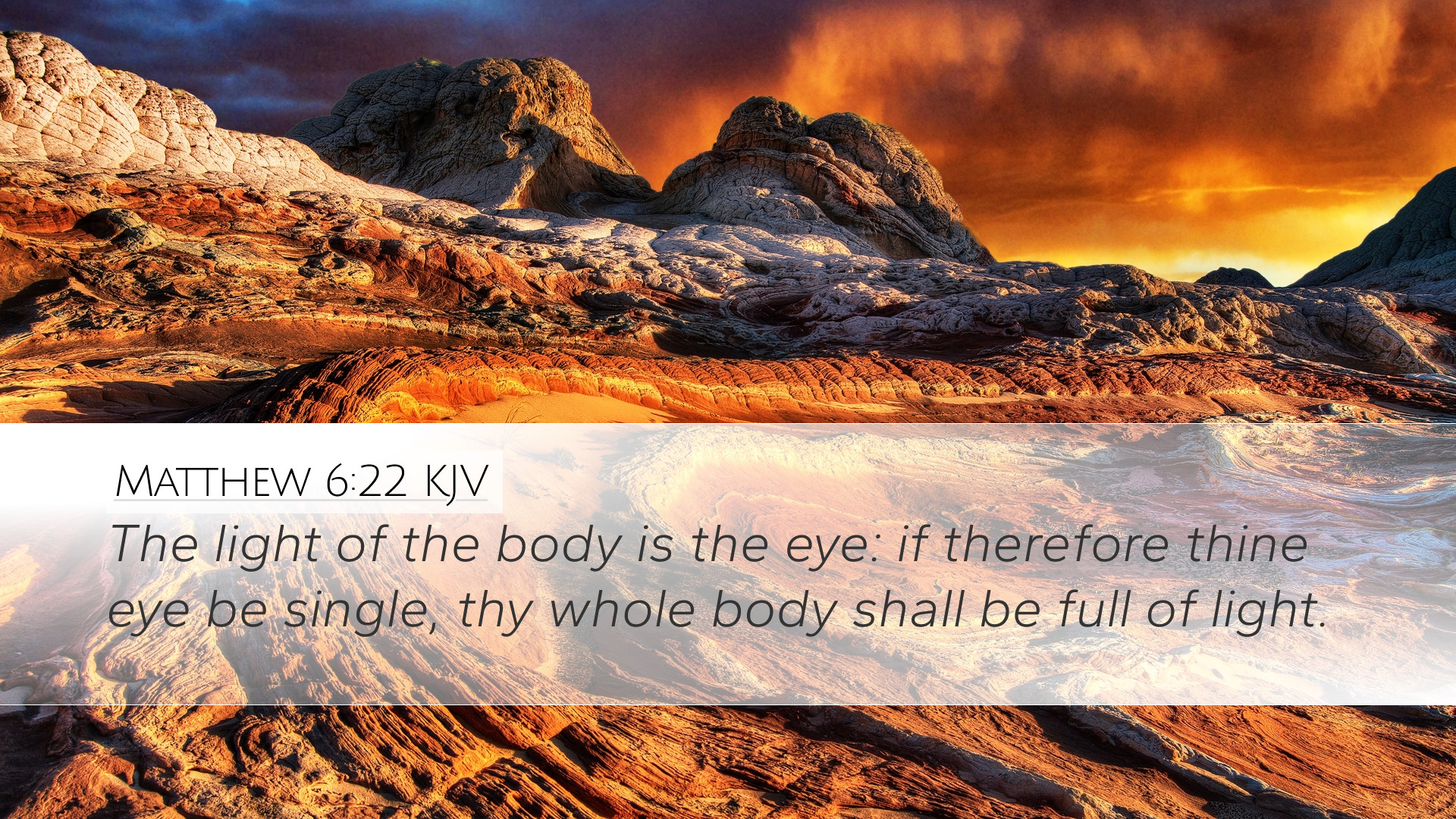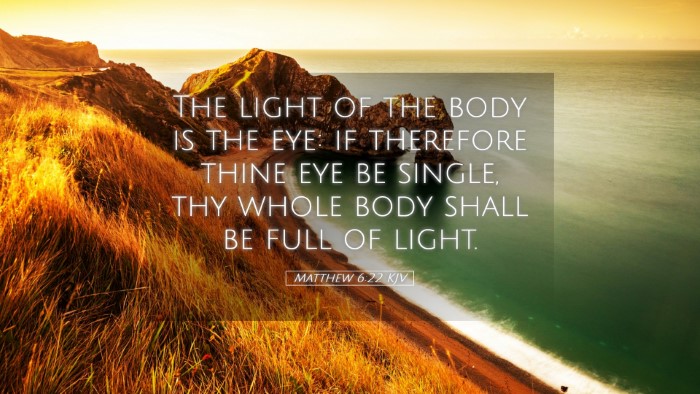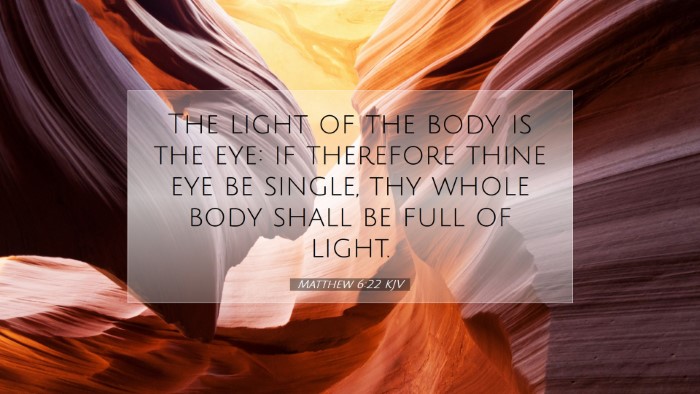Commentary on Matthew 6:22
Introduction
Matthew 6:22 states: “The eye is the lamp of the body. So, if your eye is healthy, your whole body will be full of light.” This verse forms part of Jesus' teachings during the Sermon on the Mount, where He explores the nature of true righteousness and the disposition of the heart. The verse employs vivid imagery, emphasizing the importance of perception and perspective in spiritual life.
Analysis of Key Terms
The Eye
The "eye" symbolizes one's perception and focus in life—what one chooses to look at and how one comprehends the world around them. Albert Barnes notes that the eye directs the body and indicates the thoughts and intents of the heart. Thus, a healthy eye signifies a perspective aligned with God's will, leading to spiritual illumination.
Lamp of the Body
The reference to the eye as the "lamp" underscores its role in illuminating one’s path. Adam Clarke elucidates this analogy further, explaining that just as a lamp dispels darkness, a pure and focused eye brings clarity and understanding to one's actions and decisions.
Theological Implications
This verse presents several theological implications regarding light, darkness, and the health of one's spiritual insight.
- Spiritual Perception: A spiritually healthy eye perceives the world through a framework of truth found in Christ. Matthew Henry highlights that the condition of the eye reflects spiritual health; viewers can discern God's truths and reject falsehood.
- Holistic Well-being: The idea that the whole body is full of light suggests that spiritual health affects all aspects of one’s life. When one's focus is on God, it permeates their thoughts, actions, and interactions, resulting in a life characterized by virtue and righteousness.
- Judgment and Intent: The verse also hints at the necessity of introspection; a clear and undivided focus is essential for discerning the motives behind one’s actions. Clarke posits that if the eye is "evil" or corrupted, it not only leads to physical actions grounded in darkness but also a heart filled with discord.
The Contrast of Light and Darkness
Jesus continues this theme of contrast throughout Matthew 6. The eye being the lamp, light signifies understanding, enlightenment, and divine truth, while darkness represents ignorance, sin, and spiritual blindness. Barnes brings attention to how the distinction between light and darkness is pivotal in understanding one’s relationship with God and His Kingdom. This dichotomy urges believers to evaluate where their focus lies.
Practical Applications for Believers
Self-Examination: Matthew 6:22 calls individuals to engage in serious self-examination of their spiritual sight. Are they focused on the things of God, or are their eyes drawn to the distractions of the world? This question challenges believers to realign their priorities.
Spiritual Growth: By cultivating a healthy eye, believers can experience true spiritual growth. Henry emphasizes that when one is vigilant concerning their vision—specifically what they allow to 'enter' through their spiritual eyes—the outcomes affect their heart and actions.
Influence on Others: A believer with a clear eye not only benefits personally but also has a positive influence on others. Their light can serve as a beacon of hope and guidance in a dark world, incentivizing fellow believers to pursue clarity and righteousness in their lives.
Conclusion
In this brief exploration of Matthew 6:22, it becomes clear that Jesus is inviting His followers to consider the condition of their spiritual vision. The health of one's eye—symbolizing one's focus and priorities—determines the light within. As pastors, students, and scholars, recognizing the implications of this verse in our daily walk and the broader context of Christian teaching enriches personal faith and communal worship. May we strive for a vision that illuminates and reflects the glory of God.


